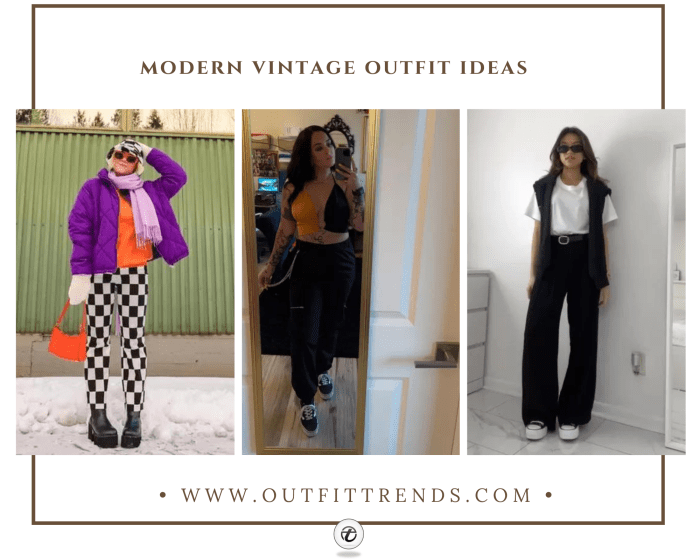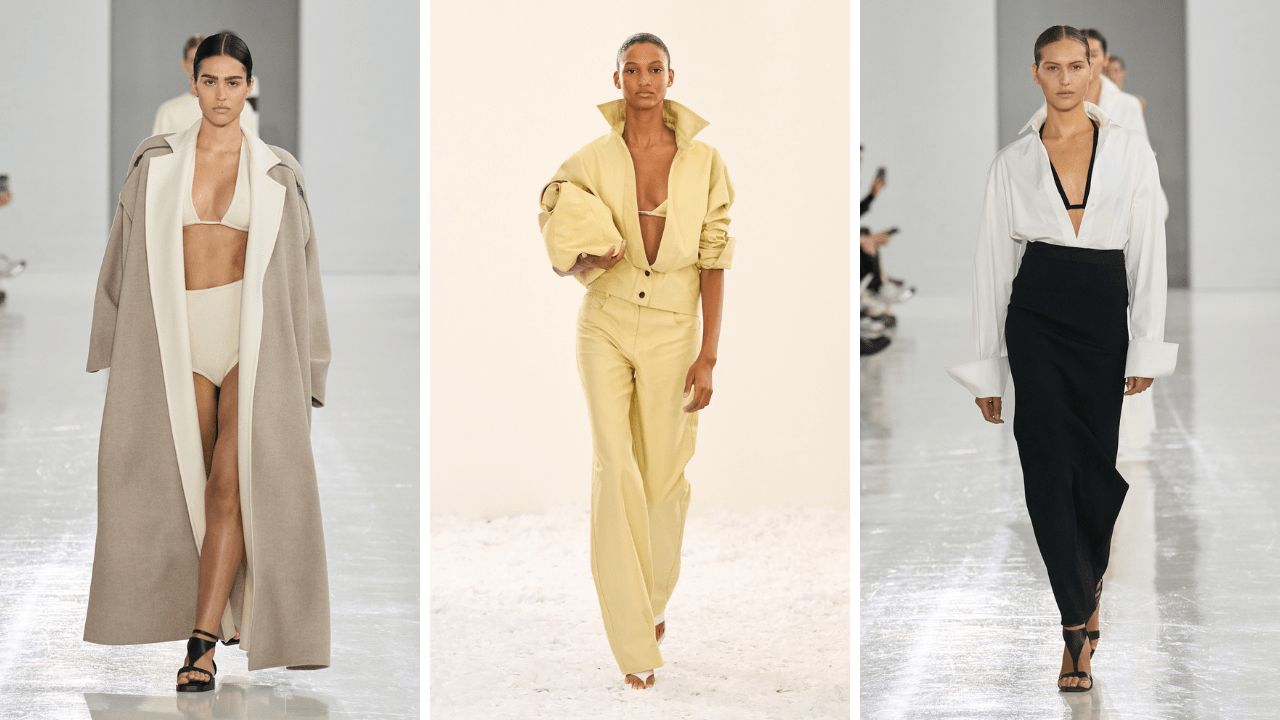Vintage clothing offers a unique blend of character, quality, and sustainability that’s hard to resist. But navigating the world of retro fashion and ensuring you look stylish, not dated, requires a discerning eye and a strategic approach. This comprehensive guide will equip you with the knowledge and techniques to seamlessly integrate vintage pieces into your 2025 wardrobe, achieving a modern and effortlessly chic look.

Source: outfittrends.com
Understanding the Vintage Landscape: Identifying Key Eras and Styles
The first step in successfully incorporating vintage clothing into your wardrobe is understanding the different eras and their defining styles. Knowing the nuances of each period will help you make informed choices that complement your personal style and the current trends. Key eras to consider include:
1920s – The Flapper Era:
- Key features: Dropped waistlines, loose, flowing silhouettes, beaded embellishments, cloche hats.
- Modern application: Incorporate a flapper-inspired dress with modern accessories like chunky boots or a sleek leather jacket. A beaded clutch adds a touch of vintage glamour without overwhelming the look.
1930s – Hollywood Glamour:
- Key features: Bias-cut gowns, elegant tailoring, sophisticated silhouettes, long gloves, statement jewelry.
- Modern application: A bias-cut skirt paired with a simple, modern top creates a sophisticated and timeless look. A vintage-inspired brooch adds a touch of old-world charm.
1940s – Wartime Chic:
- Key features: Pencil skirts, tailored jackets, A-line dresses, padded shoulders, headscarves.
- Modern application: A 1940s pencil skirt paired with a contemporary oversized sweater or a crisp white shirt creates a balanced and stylish outfit. A headscarf adds a touch of vintage flair.
1950s – Rockabilly and Pin-up:
- Key features: Full skirts, cinched waists, petticoats, cardigans, cat-eye sunglasses.
- Modern application: A vintage 50s-style skirt paired with a simple t-shirt and sneakers creates a playful, modern look. Adding a leather jacket adds an edge.
1960s – Mod and Swinging Sixties:
- Key features: A-line mini dresses, geometric prints, shift dresses, go-go boots.
- Modern application: A 60s mini dress can be styled with modern boots and a leather jacket for a cool, contemporary look. A geometric print scarf adds a pop of vintage style.
1970s – Disco and Bohemian:
- Key features: Bell bottoms, platform shoes, bohemian dresses, fringe, suede.
- Modern application: Bell bottoms can be paired with a fitted top and modern accessories. A bohemian dress can be layered with a denim jacket for a casual yet stylish look.
1980s – Power Dressing and New Romantics:
- Key features: Power suits, shoulder pads, bold colors, leggings, oversized sweaters.
- Modern application: An 80s blazer can be paired with modern jeans or a skirt for a stylish and unexpected contrast. A statement necklace adds a touch of 80s glamour.
Selecting and Styling Vintage Pieces: Tips for a Modern Look
Once you’ve identified the eras and styles you’re drawn to, it’s time to start curating your vintage wardrobe. Here are some essential tips:
Prioritize Quality and Fit:
- Choose well-made garments in fabrics that will last. Look for natural fibers like cotton, wool, silk, and linen.
- Fit is crucial. Even the most beautiful vintage piece will look dated if it doesn’t fit properly. Don’t be afraid to have items altered by a tailor.
Mix and Match Eras and Styles:
- Don’t be afraid to mix and match pieces from different eras. A 1940s skirt paired with a modern top can create a unique and stylish look.
- Experiment with contrasting textures and patterns. A vintage floral dress paired with a leather jacket can create a striking and modern outfit.
Accessorize Strategically:
- Accessories are key to updating a vintage look. Modern shoes, bags, and jewelry can transform a vintage outfit into something contemporary.
- Consider using statement jewelry to draw attention away from overly dated details.
Focus on Modern Silhouettes:
- While embracing vintage details, ensure the overall silhouette is flattering and contemporary. Consider tailoring to achieve a more modern fit.
- Avoid overwhelming your look with too many vintage elements at once. Start with one or two key pieces and build from there.
Consider the Fabric and its Condition:
- Inspect vintage clothing carefully for damage or wear and tear before purchasing. A professional cleaning and repair can often revitalize a piece.
- Choose fabrics that are easy to care for and will stand the test of time.
Source Your Vintage Finds:
- Thrift stores, consignment shops, online marketplaces (Etsy, eBay), and vintage boutiques are excellent places to find unique vintage pieces.
- Attend vintage markets and fairs for a more immersive experience and wider selection.
Frequently Asked Questions (FAQ)
- Q: How do I clean vintage clothes? A: Always check the care label (if present). Delicate items may require hand washing or dry cleaning. For more durable items, machine washing on a gentle cycle may be appropriate.
- Q: How can I tell if a vintage item is authentic? A: Look for details like original labels, stitching, and construction techniques. Research the era and brand to verify authenticity.
- Q: Where can I find vintage clothing online? A: Popular online marketplaces include Etsy, eBay, and Depop. Many vintage boutiques also have online stores.
- Q: How do I avoid looking like I’m in a costume? A: Balance vintage pieces with modern items. Focus on fit and accessorize strategically to create a contemporary look.
- Q: What are some common vintage clothing mistakes to avoid? A: Wearing ill-fitting clothes, overwhelming your look with too many vintage pieces, and neglecting to accessorize appropriately.
Resources
- The Vintage News (for historical context)
- Vintage Aholic (for style inspiration)
- Etsy (for online vintage shopping)
Call to Action
Embrace the timeless elegance and unique character of vintage clothing! Start exploring the world of vintage fashion today. Find your perfect piece, style it with confidence, and create a wardrobe that reflects your individual style and commitment to sustainable fashion.
FAQ Section
What are some common vintage clothing mistakes to avoid?
Overdoing it with vintage pieces can look dated. Start with one or two key vintage items and build from there. Also, avoid wearing vintage clothing that is ill-fitting or poorly maintained. Proper cleaning and tailoring can make a big difference.
Where can I find authentic vintage clothing?

Source: stylecaster.com
Thrift stores, consignment shops, online marketplaces (like eBay and Etsy), and vintage boutiques are great places to start. Researching different sellers and understanding the authenticity of items is crucial.

Source: whatisshewearing.com
How do I determine the quality of a vintage garment?
Look for high-quality materials, well-constructed seams, and details that suggest craftsmanship. Examine the garment for signs of wear and tear and consider having it professionally cleaned or repaired if needed.
How can I make vintage clothing fit my body type?
Tailoring is key! A good tailor can alter vintage clothing to fit your body perfectly. Consider simple alterations like taking in seams, adjusting hems, or shortening sleeves.
